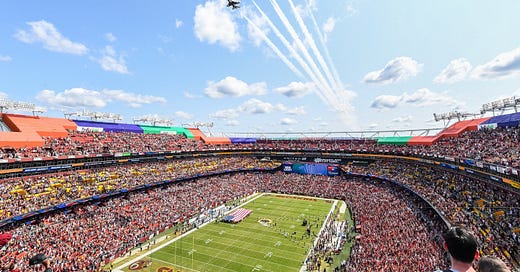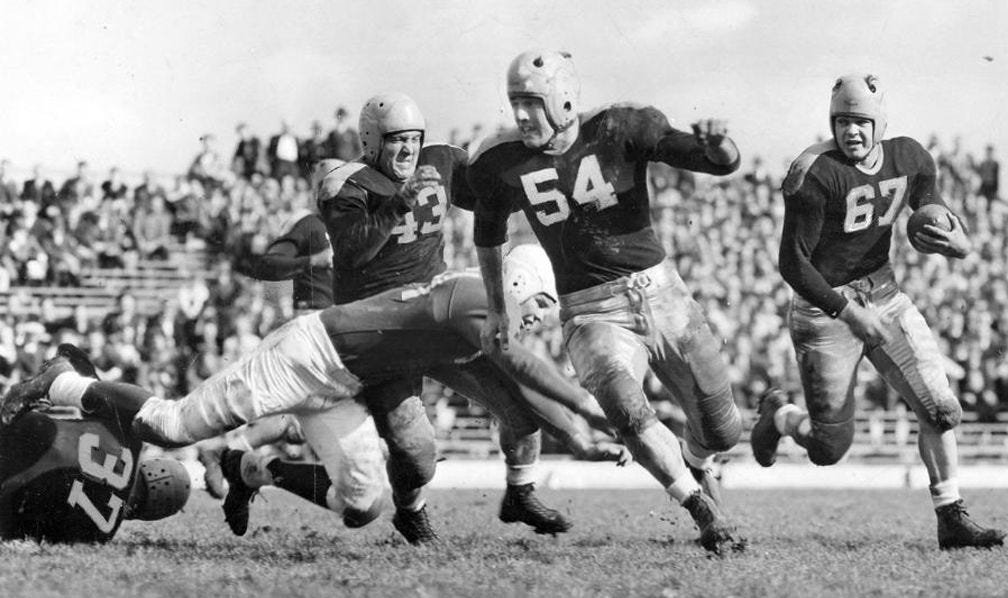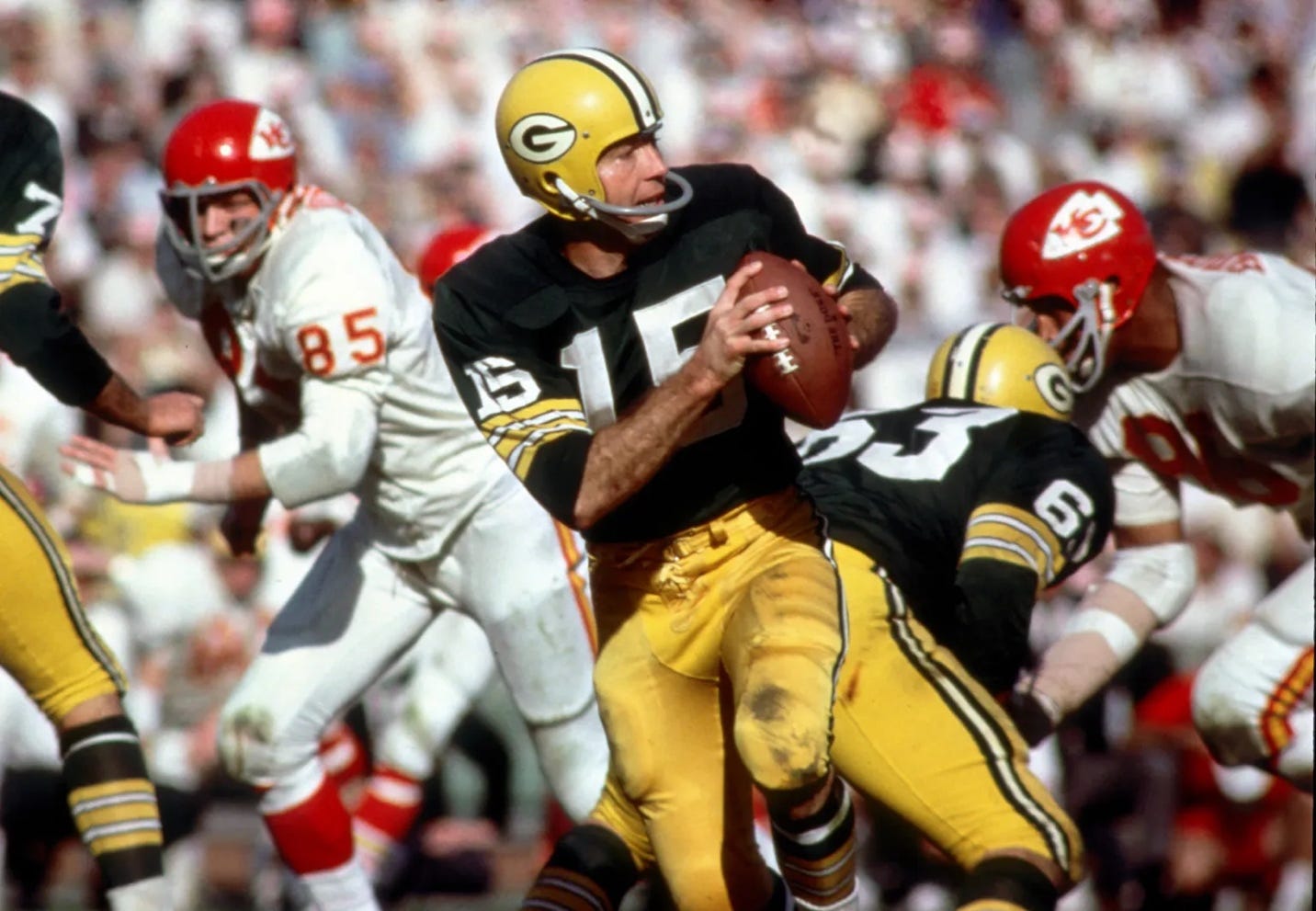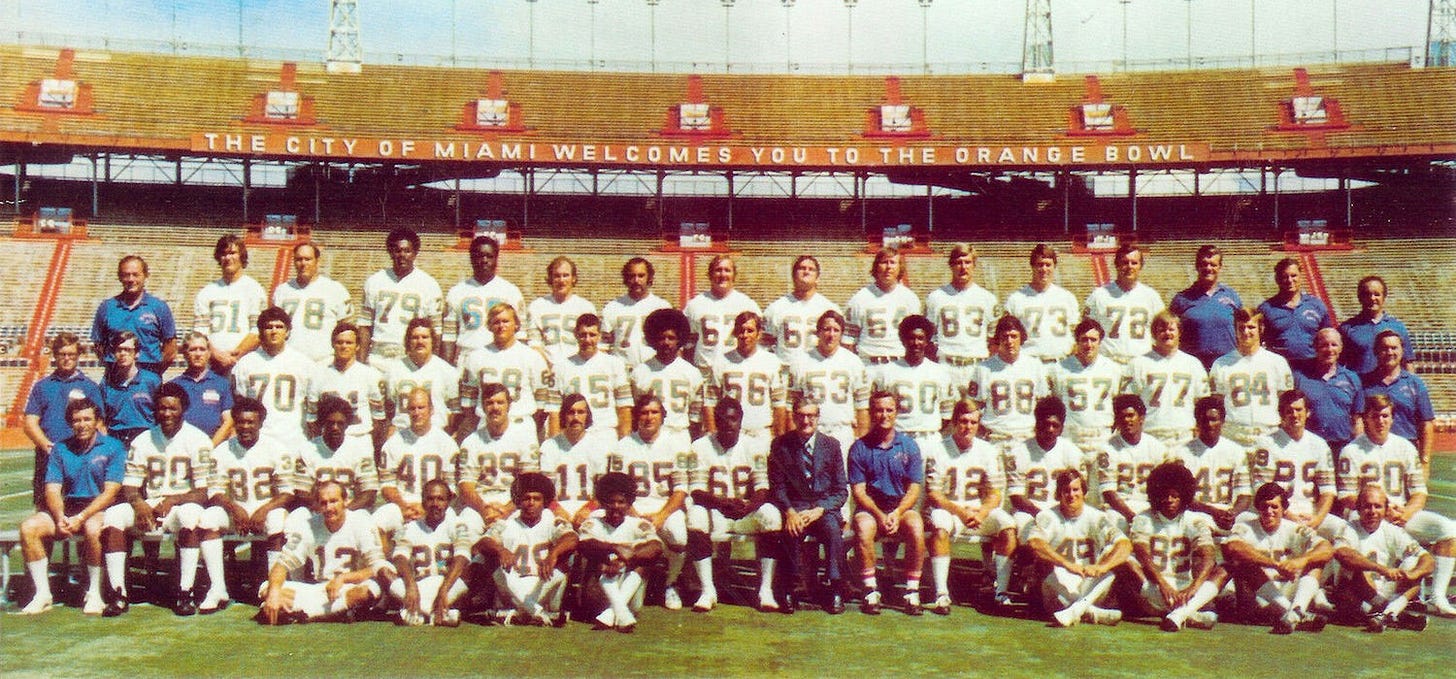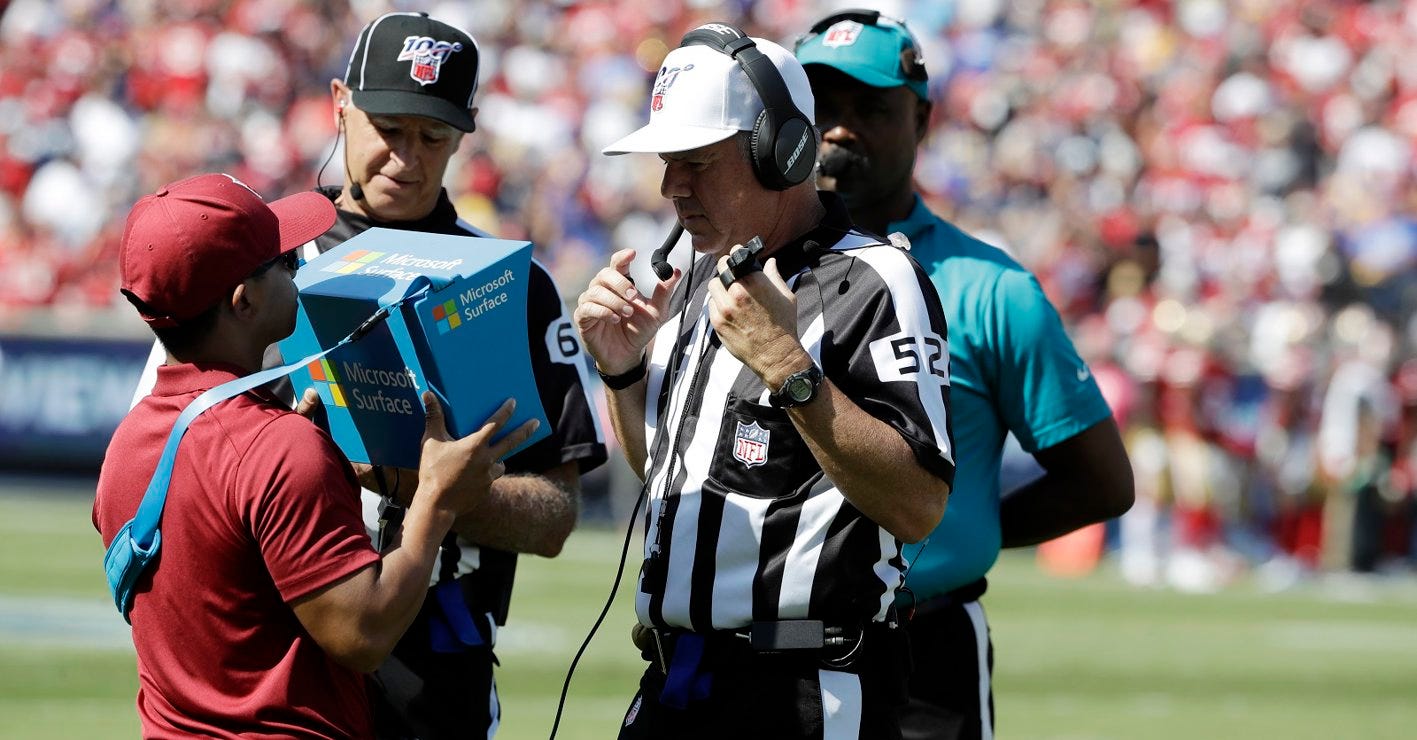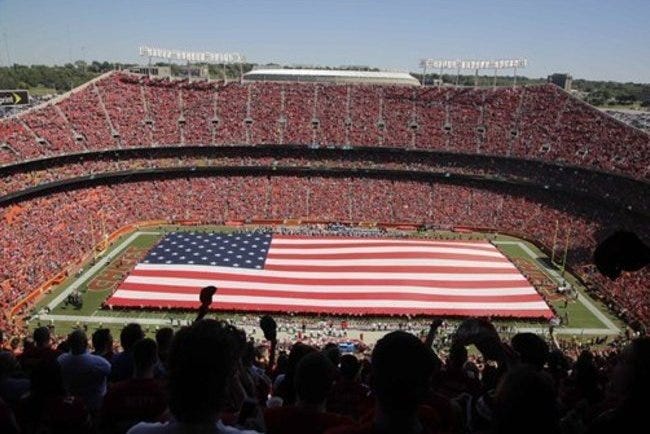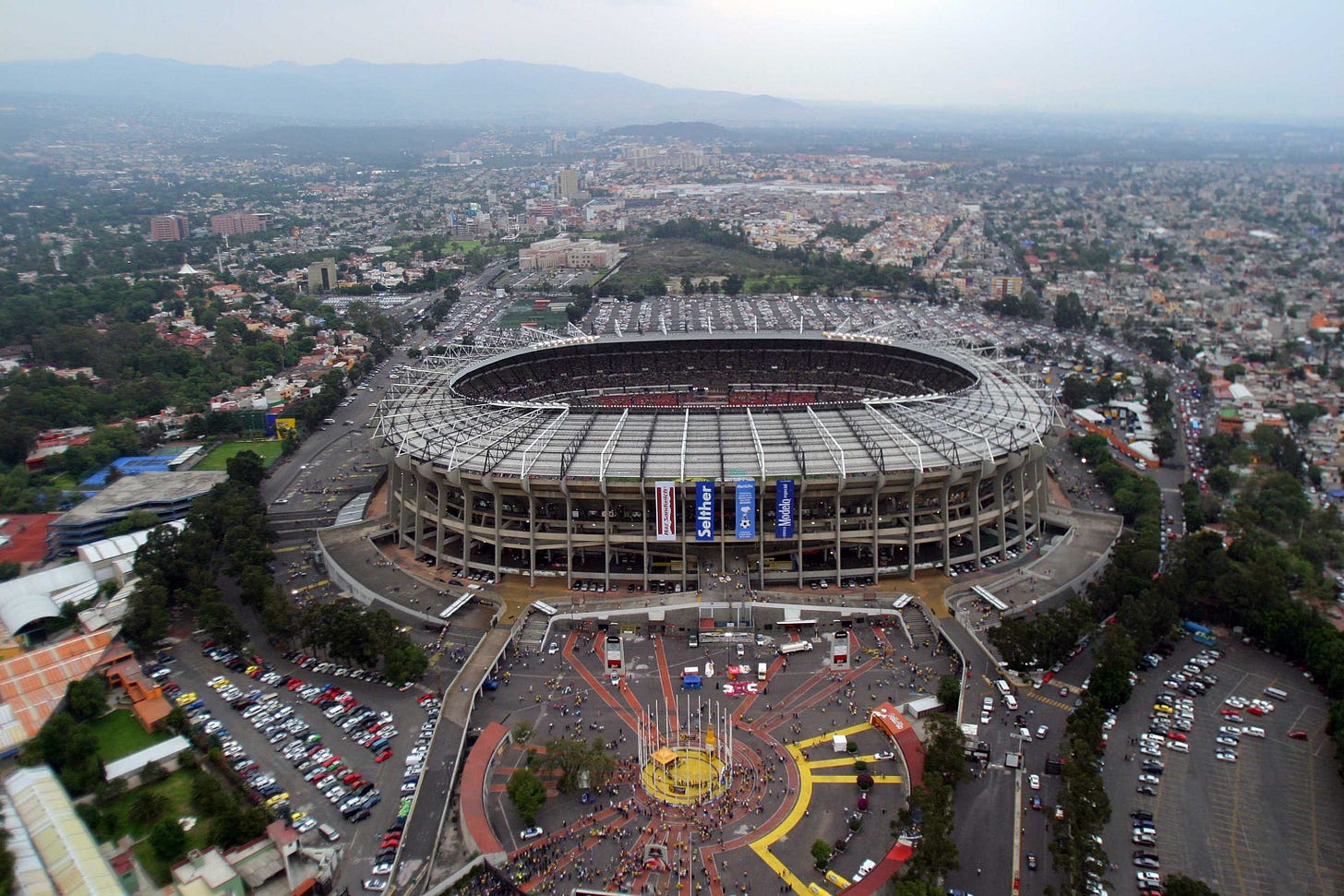The NFL's Journey: From Steel Mills to Global Brand
The rise of America’s favorite sport parallels the rise of a superpower
Last year, Ad Astra wrote an article outlining an unstoppable fantasy football strategy. Deploying that strategy, I took 1st place in my fantasy league in the regular season and an act of fate relegated me to 3rd place in the playoffs. So that is indeed the immortal winning strategy. Instead of boring the reader with more fantasy advice, this year we celebrate the arrival of NFL football by looking at its history.
NFL football is America’s favorite sport, a title it has held since the 1960s. The 32-team league is one of the only remaining US institutions with bipartisan support and earned $12 billion in 2021. But it wasn’t always this way.
Figure 1: America's favorite sport through the decades
Origins
Professional football began among the steel mills of Pittsburgh in the 1890s. The Alleghany Athletic Association (AAA) sponsored games in the local region, drawing large crowds of off-duty factory workers. A touchdown was worth 4 points until 1898, 5 points until 1911, before becoming 6 points. Baseball, boxing and horse racing were all more popular than football in those days.
Informal professional leagues emerged among the many industrial towns of Ohio, Pennsylvania and other eastern states. Many of these were in small towns like Fort Wayne, Indiana, Evanston, Illinois, and Canton, Ohio. The first national league began in 1921 as the American Professional Football Association (AFPA), renamed the National Football League (NFL) in 1923. Among the teams were the Decatur Stanleys (later renamed Chicago Bears) and Chicago Cardinals (now Arizona Cardinals). The previously independent Green Bay Packers joined the NFL in 1923.
The “Blue Laws” were a series of ordinances meant to encourage observation of the Christian Sabbath, so most NFL games were played midday on Saturday to avoid a lack of electric lighting. Stadiums held around 10,000 fans and teams often played bruising multiple game per week schedules. Many smaller franchises did not survive the Great Depression and 40 teams would fail by 1940.
In 1939, the Brooklyn Dodgers home game appeared on NBCs experimental television station across 200 TVs in the New York City area. One area customer was unable to watch the game due to technical difficulties and an unfortunate NBC Vice President had to call President Franklin D. Roosevelt to apologize. Showing its national ambition, the NFL failed to hire FBI Director J. Edgar Hoover to be its first Commissioner in 1941.
Figure 2: Green Bay Packers circa 1940
War
Three games were underway when Pearl Harbor was attacked. In a time before cell phones, PA announcements in each stadium called for various military men to report to their posts. The NFL sought to maintain operations during the war to promote morale, but labor shortages made it challenging – over 1,000 players and coaches enlisted in the war effort.
Figure 3: Washington DC Griffith Stadium on December 7, 1941
Another war took place after the cessation of overseas hostilities. The All-American Football Conference (AAFC), an upstart league, tried to challenge the NFL. They signed many veteran players (from the war) and hired the commander of U.S. Navy Atlantic fleet to run the league. In the end, the NFL absorbed the AAFC but not before the Cleveland Browns went undefeated (15-0) in 1948. The merger resulted in an annual world championship game and introduced new teams like the Browns and 49ers.
The 1950s were an idyllic age for the NFL. Most teams achieved financial stability and the final three team failures occurred (the Baltimore Colts, Dallas Texans, and New York Yankees). The 1958 world championship became known as “the greatest game ever played”, solidifying football as America’s favorite sport. It was a David vs. Goliath tale featuring the blue-collar Baltimore Colts vs. the elite NY Giants (with Vince Lombardi as offensive coordinator). The game, played in Yankee Stadium, went to sudden death with 45 million watching on TV. There were 17 future hall-of-famers present and the Colts quarterback was playing with 3 broken ribs and a collapsed lung. In the end, all of the Giants sophistication (an assistant coach high in the stadium would zipline polaroid pictures of Colts formations down to the sideline with a weighted sock) was not enough to stop the gritty Colts.
Americas Sport
In 1960, a group of wealthy Texas oil men founded the American Football League (AFL). The AFL's original lineup consisted of an Eastern division of the New York Titans, Boston Patriots, Buffalo Bills, and the Houston Oilers, and a Western division of the Los Angeles Chargers, Denver Broncos, Oakland Raiders, and Dallas Texans. In response to the challenger league, the NFL expanded. The AFL sued the NFL on antitrust grounds, commencing a courtroom and gridiron war.
The AFL secured a leaguewide TV contract with ABC, prompting a monopoly suit by the DOJ. The NFL had deals with CBS and NBC, negotiated separately by each team. Congress intervened and approved the NFL expansion and the bill was signed into law by JFK. The DOJ lost their antitrust suit against the AFL and Congress approved the merger of the NFL and AFL in 1966. The teams would operate as separate leagues until 1970 and meet each other for a world championship annually, the Super Bowl.
The 4 pre-integration Super Bowls would give eternal bragging rights to the NFL or AFL: who was better? Super Bowl I was played between the NFL’s Green Bay Packers (coached by Vince Lombardi) and the AFL’s Kansas City Chiefs. The stadium was filled with only 61,000 fans but 51 million TV viewers tuned in. The Packer’s won, NFL 1-0. The Packers won again in Super Bowl II, before the AFL struck back with the NY Jets in Super Bowl III, and the Kansas City Chiefs in Super Bowl IV. The series ended 2-2 and the debate rages on to this day.
Figure 4: Super Bowl I - Green Bay vs. Kansas City
Golden Era
In the 1970s, the NFL really began to hit its stride. Americans wanted more football and ABC began Monday Night Football, not to conflict with Friday night high school football. The Pittsburgh Steelers completed the “Immaculate Reception” in the 1972 playoffs, widely considered the greatest play ever. The game-clinching play was especially meaningful to a city down on its luck, its factories closing and steel mills shutting down. Also in 1972, the Miami Dolphins were perfect, going 17-0 and winning the Super Bowl. Before being known for his white Bronco, OJ “The Juice” Simpson made the Pro Bowl 5x and was the NFL’s MVP in 1973.
Figure 5: 17-0 1972 Miami Dolphins
Lost Decade and Go-Go 1990s
The 1980s were filled with labor disputes, stadium problems, and other off-field troubles. Another upstart league – the United States Football League (USFL) – got started in the early-1980s. The USFL played in the spring so it didn’t compete with the NFL. The New Jersey Generals signed superstar Hershel Walker from the University of Georgia as a junior, announcing the USFL as a viable competitor to the NFL.
A real estate tycoon from New York, Donald Trump, bought the Generals and was behind a push to move the USFL to the fall and compete directly with the NFL in 1986. The USFL’s strategy was to sue the NFL and use the damages to continue operations. Other owners said that Trump secretly anticipated the NFL absorbing the USFL and that Trump was just trying to get a discount New York team. The USFL sued the NFL on antitrust grounds and won, but only received $1 in damages. Without funding, the USFL died in 1986.
NFL.com launched in 1995, a first for major sports leagues. The Carolina Panthers and Jacksonville Jaguars were also added in 1995. In a major change to the game, modern instant replay was added in 1999. In 2000, Robert Kraft hired Bill Belichick, the Patriots drafted Tom Brady in the 6th round, and ground was broken on Gillette Stadium in Foxborough, Mass. The last expansion team, the Houston Texans, was added in 2002.
Figure 6: NFL officials review instant replay
America’s Rock
Two spouses of NFL employees died on 9/11 in the Twin Towers. The league paused games that week and resumed them one week later with fans decked out in red, white and blue. Seven NFL players enlisted, notably Arizona Cardinals safety turned Army Ranger Pat Tillman, who was killed in Afghanistan in 2004.
Figure 7: Kansas City's Arrowhead Stadium after 9/11
In 2005, massive Category 5 Hurricane Katrina slammed into New Orleans and breeched its levees. The resulting flooding displaced thousands and the Louisiana Superdome was set up as a shelter. The Superdome needed extensive repairs after the flooding, and the New Orleans Saints plated at LSU’s stadium in Baton Rouge and NYC in the 2005 season. The Saints came back to the Superdome in 2006 and dominated their home opener against the Atlanta Falcons in a Super Bowl-like atmosphere.
NFL Goes Global
In 2007, NFL began annual international games which today includes games in London, Mexico City and Germany. The NFL is a global brand and actively considering permanent international expansion teams. The league signed media deals worth over $100 billion in 2021[i].
Figure 8: Estadio Azteca, where the NFL plays an annual game, in Mexico City, MX
The NFL’s journey, from its humble beginnings in the steel mills of Pittsburgh to its global spectacle today, is a testament to its enduring allure and ability to evolve. As America's favorite pastime, the NFL has not only offered thrilling sporting moments but has also mirrored and at times shaped the nation's social and cultural landscape. Its resilience in the face of wars, economic downturns, and societal shifts underscores its integral place in the American identity. As we look back on a century of NFL history, it's clear that this is more than just a sport — it's a reflection of American spirit and ambition. As the league sets its sights on global expansion and new horizons, one can only imagine the legendary moments and stories the next 100 years will bring.[1]
In case you missed it - Ad Astra online
[1] Horrigan, Joe. NFL Century: The One-Hundred-Year Rise of America’s Greatest Sports League. Crown, 2019.
[i] https://www.nytimes.com/2021/03/18/sports/football/nfl-tv-contracts.html

